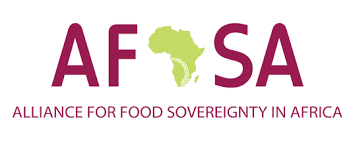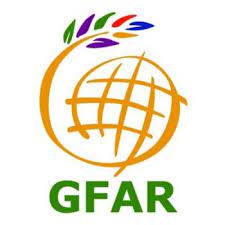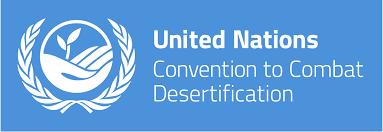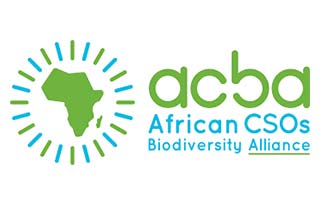"Africa and the Climate: an Opportunity to Adapt and thrive "

|
|
SeatDemocratic Republic of Congo |

|
climatechangeafricaopp@gmail.com |
"Africa and the Climate: an Opportunity to Adapt and thrive "

|
|
SeatDemocratic Republic of Congo |

|
climatechangeafricaopp@gmail.com |
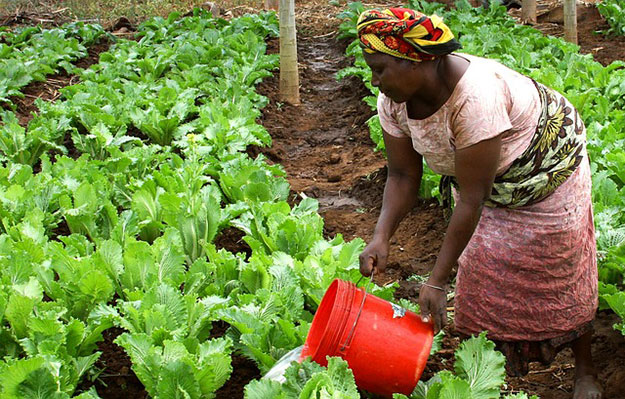
INVESTMENT PLAN FOR DEVELOPMENT CLIMATE RESILIENT AGRICULTURE IN AFRICA
SUMMARY
In its mission to improve and strengthen African resilience to the challenges of climate change in the field of agriculture, and in accordance with its strategic plan 2020 - 2030, the pan-African and indigenous organization Climate Change Africa Opportunities (CCAO) has developed its enthusiasm for the development of climate-resilient agriculture in Africa.
Indeed, climate-resilient agriculture focuses on the three pillars of strengthening food security: (a) sustainable increase in production, (b) strengthening of resilience (adaptation) to climate change and (c) reduction of greenhouse gas emissions, where possible and appropriate.
Climate-resilient agriculture is not a set of practices; it is an approach of selection and implementation of agricultural practices, policies and services adapted to the context, in time and space, and integrated, so that they work together to maximize synergy and minimize tradeoffs. What works for one group of farmers - because of their location, culture and location - may not work for another group. This approach requires the evaluation of the impacts of an investment based on the biophysical, agricultural and socio-economic context of a given place.
This investment plan is a strategic and in-depth planning document allowing Climate Change Africa Opportunities (CCAO) to propose agricultural development projects with high potential and high quality which may be the subject of possible partnership links with partners. and donors involved in supporting the resilience of agriculture in the context of climate change in Africa.
SOIL MANAGEMENT
Basic features and contextual elements
Africa undergoes and experiences insufficient rainfall, frequent droughts, demographic pressure, over-exploitation of land, inappropriate agricultural practices, insufficient use of fertilizers ... African soils are weakened, sometimes exhausted. Among the most notable phenomena: erosion, chemical degradation (loss of nutrients, salinization, acidification, etc.) and physical degradation (soil compaction, silting up, etc.). These phenomena are exacerbated by the effects of climate change in Africa. Soil management is therefore a major issue, since African soils represent a significant potential for carbon sequestration. Africa also concentrates 65% of the unexploited arable land on the planet. The existing solutions, it is a question of supporting their development and accompanying their implementation.
In response to this first challenge related to soil management, Climate Change Africa Opportunities (CCAO) promotes and supports three main families of solutions to improve soil management:
SOIL FERTILITY AND CROP FERTILIZATION
Basic features and contextual elements
Africa is one of the regions of the world which consumes the least fertilizers. The reason: the lack of availability of fertilizers, in quantity and quality, insufficient awareness of farmers about their benefits, and financial obstacles.
Actions can be taken to develop an integrated management of soil fertility through a wider and more reasoned use of fertilizers (modern and indigenous).
Management that must take into account the complexity of each local situation: the variety of soils and cropping systems is immense in Africa.
Main solutions and recommendations
1)The development of information systems on soil fertility: adoption of new technologies for soil mapping and digital compilation; establishment of soil fertility and crop fertilization observatories;
2)Systems management: improvement of the biological fixation of atmospheric nitrogen allowing a better availability of nitrogen in the soil by adopting rotations based on food and fodder legumes; use of fertilization and establishment of hydroponic crops; development of organic farming; treatment of soil acidity through the application of phosphate rock; rehabilitation of routes; etc
3)Improvement of nutrient resources: recovery of organic waste in agriculture and management of crop residues; treatment and reuse of wastewater (sources of solid waste); solid waste and agricultural by-products for the production of composts; improvement of fertilizer supply and distribution systems; development of mixing units (mixtures) for the production of fertilizers adapted to local conditions; etc
To adopt these solutions, indigenous peoples, young people and women small farmers must be supported in different African countries:
1)Awareness and education on the use of fertilizers: agricultural advice, advertising, field schools, innovation platforms; etc
2)Financial aid: facilitation of access to credit, use of smaller packages for less investment, implementation of incentive policies of the type; etc
ARBORICULTURE AND PRODUCTIVE AGRO-FORESTRY
Basic features and contextual elements
To cope with climatic extremes, indigenous peoples, young and women small farmers in Africa are developing survival mechanisms. They take short-term measures that degrade resources and affect productivity and regeneration over time.
On the livestock side, Africa also faces a major challenge. This sector, which contributes more than 26% to the constitution of African agricultural GDP, is not very productive because it is linked to traditional production systems very vulnerable to climate change.
Productive agroforestry, which combines agricultural crops, trees / shrubs and livestock, in synergy, offers many benefits for farmers and breeders, as well as for the environment.
Today in Africa, more than 715 million deforested and degraded lands are suitable for restoration.
Main recommendations and solutions
1)Integrated management of cropping systems in agroforestry and arboriculture: improvement of technical management; promotion of peri-urban agroforestry; domestication of indigenous species and introduction of species of economic interest;
2)Integrated management of pastoral systems: development of rangelands and regulation of transhumant flows; securing pastoral areas and strategic pastoral areas; development / execution of development / rehabilitation protocols for the routes; creation and treatment of water points for the growth of livestock;
3)Integrated management of forest systems: improving the management of forest landscapes and sharing of gains; implementation of large-scale afforestation / reforestation programs; creation of national forest parks for carbon storage and safeguarding biodiversity; implementation of sustainable management of natural forests and strengthening of reforestation / planting efforts;
4)Indigenous peoples, young people and women small farmers in Africa must be made aware, supported and trained in these practices.
All these opportunities can materialize on a large scale, thanks to voluntarist national or regional policies, the strengthening of regulatory and institutional provisions, the commitment of the private sector, the improvement of the agricultural investment environment and the strengthening of research capabilities.
AGRO-ECOLOGICAL INNOVATIONS AND CARBON SEQUESTRATION
Basic features and contextual elements
African soils, especially unused land, have great potential for storing carbon. But at present, Africa only stores 175 gigatons of carbon, out of a total of 1,500 gigatonnes stored worldwide.
Carbon storage is however both a solution to global warming (mitigation or compensation of GHG emissions) and to soil degradation (water retention, stability of aggregates, mitigation of sodicity, biological activity, etc.)
An ecologically sustainable alternative to productivist agriculture, agroecology makes it possible to benefit from the storage potential of soils while limiting their degradation.
Its approach must be multifaceted (adapted to each zone) and balanced (it is a question of finding a happy medium between a productivist agriculture and an agro-ecology which would consist in "producing with less or zero inputs").
Agro-ecology must adopt practices specific to the three scales (plot, farm, territory) and to the components of agro ecosystems.
Main recommendations and solutions
Among the main agro ecology and carbon sequestration solutions:
1)The establishment of conservation agriculture based on minimum mechanical tillage (no tillage or no-till), permanent coverage of the soil with mulch of organic matter rich in carbon (straw and / or other residues )), rotations and cultural associations (including nitrogen-fixing legumes);
2)The establishment of intercropping (between the rows of trees);
3)The development of composting, the incorporation of crop residues;
4)The development of bio-intensive micro-agriculture;
5)Fallow;
7)The sustainable development of oases;
8)The sustainable development of agro-pastoral areas.
AGRICULTURAL WATER MANAGEMENT
1)Basic features and contextual elements
2)Africa is the continent that suffers the most from shortage of agricultural water.
3)About 66% of its territories are located in arid or semi-arid zones and suffer from the lack of water. The continent tends to dry out even more because of climate change: increase in temperature and reduction of forecasts, with more frequent and longer extreme events. Even regions with sufficient water suffer from the lack of mobilization, storage and distribution infrastructure for land irrigation. In Africa, the share of irrigated cultivable area is only 5%, while the irrigable potential is 25%. Irrigation on the African continent can be developed through a global approach and concerted and voluntary action.
4)The solutions of the initiative for the adaptation of African agriculture to climate change in the field of water control are results / production oriented. They seek complementarity between water mobilization schemes, hydro-agricultural schemes, development of plots, exploitation and strengthening of institutions and development. All without excluding the dimension of the areas of development for irrigation (large perimeters, collective or village perimeters, small private irrigation, development of lowlands).
5)Within this framework, five priority action themes are identified:
a. Reinforcement of the mobilization of water potential: rehabilitation of existing structures to optimize their capacities, construction of new structuring structures;
b. The voluntary development of complementary irrigation between large-scale irrigation through the development of the great plains, lowland and flood farming, and small-scale village irrigation and individual irrigation;
6. Continued strengthening of integrated water resources management (IWRM), particularly for the management of transboundary waters;
7. Modernization and promotion of more water efficient and productive irrigation and production systems;
8. Voluntary support for the development of irrigation through capacity building.
CLIMATE RISK MANAGEMENT
Basic features and contextual elements
Africa is the continent most affected by the effects of climate change. Cartographic vagaries: drought waves, strong temperature variations, violent forecast, endangered agriculture and food security. Africa is also one of the regions in the world least prepared for these graphic risks: 2/3 of African countries have little or no capacity to manage these risks. Good climate risk management is based on the quality and pooling of the data collected, and on the involvement of all the players concerned.
Climate Change Africa Opportunities (CCAO) offers 4 types of climate risk management solutions:
1. Development of observation and forecasting systems: improvement of the meteorological and climatic observation network (densification and modernization); improved weather forecasting systems; development of agro-map systems for forecasting agricultural crops and fodder (processing and analysis of meteorological, agricultural and satellite data); development of earth observation institutions (based on space remote sensing, cartography, GIS, GPS and other geomatics applications);
2. The development of index agricultural insurance, an insurance product based on weather and satellite indices;
3. The development of training programs, academic and continuous: training in Geographic Information Systems, agro-meteorology, space remote sensing; systems for monitoring the condition of crops and fodder, Web-GIS application for the dissemination of agro-weather information, etc .;
The implementation of these solutions requires the involvement of all stakeholders, including scientists and engineers (meteorologists, agronomists, computer scientists, etc.), institutions (ministries, universities, agronomic research centers, insurance companies, etc) and farmers who must be recognized and supported.
CAPACITY BUILDING AND FINANCING SOLUTIONS
In the climate fight, the issue of financing is crucial. According to a study by UNEP (2010), the economic cost of climate change for Africa could represent 1.5 to 3% of GDP, each year, until 2030. According to a study by the AfDB, adaptation costs in Africa would be around US $ 20-30 billion. Current flows remain insufficient to meet the real needs of Africa, particularly in terms of agriculture and adaptation. Adaptation projects mobilize only 20% of public climate funds, whereas they should 50% for a balanced distribution.
Climate Change Africa Opportunities (CCAO) calls for the mobilization of partners and donors for the financing of indigenous peoples, young and African women small farmers, startups and initiatives of young green entrepreneurs, involved in smart agriculture and climate -resilient for sustainable development of Africa.






